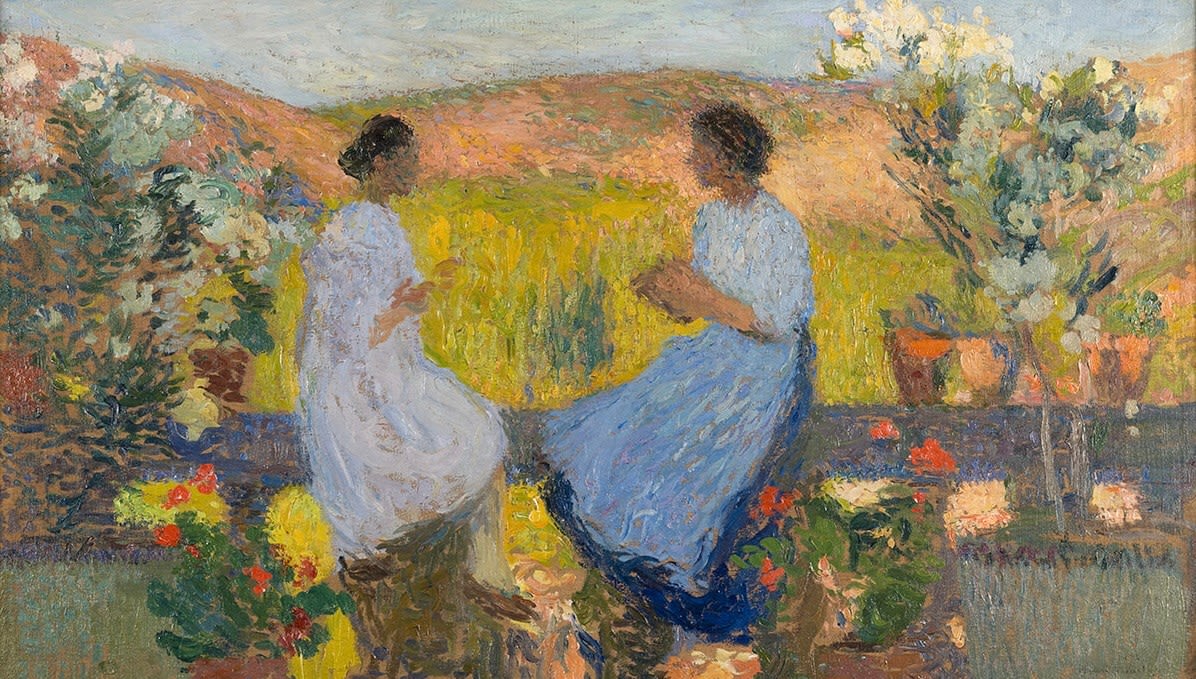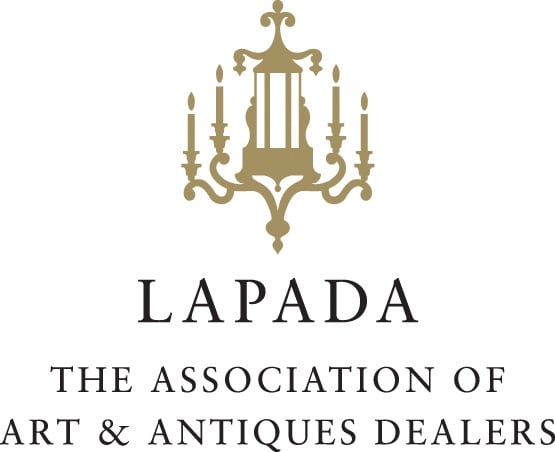Henri Martin 1860-1943
Framed: 78 x 119 cm.; 30¾ x 46¾ in.
“By discovering Marquayrol, Henri
Martin had found his equilibrium, his
personal and artistic fulfilment.”
Claude Juskiewenski, Henri Martin 1860–1943, Paris, 1993, p. 103
Seated on a terrace in the golden glow of late evening, two women pause in intimate discourse, their forms almost dissolving amongst the flowers and landscape unfolding behind them. The left figure, dressed in luminous whites with violet shadows, sits facing her companion clad in rich blue-violet garments, engaged in what seems to be needlework. The curved yellow-green space between them creates a kind of aureole, imbuing the work with a spiritual dynamic.
The location for the work is Martin’s countryside home Marquayrol in Labastide-du-Vert in the south of France. He purchased the estate in 1900, and his time there marked a decisive shift from his Symbolist roots to a personal form of Neo-Impressionism. Like Monet’s Giverny or Le Sidaner’s Gerberoy, it was a cultivated paradise: lush, ordered, and endlessly inspiring. He painted the grounds from countless angles over four decades, compare for example Le Terrasse de Marquayrol, 1920 (sold Sotheby’s, 25 June 2025, lot 141).
The compositional structure evokes the tradition of enclosed gardens – ‘hortus conclusus’ – prevalent in Christian art from the Middle Ages onwards, often used to suggest purity and symbolic of a sanctuary for feminine contemplation. In this regard, the painting relates to the work of the Symbolists with whom Martin had associated, Pierre Puvis de Chavannes once declaring Martin his successor. Their work is infused with mystery and allegorical undertones which go beyond simple observation. La Conversation functions simultaneously as a glimpse of observed life and as a reflection on the themes of communication, creativity, and the passage of time. The cyclical nature of seasonal change, implied by the flowering garden, mirrors the rhythmic continuity of human discourse and domestic labour.
Martin’s consistent and sophisticated use of colour and light is a defining feature of his career and emphatic in La Conversation. The warm Mediterranean sun permeates every element of the composition through a bold palette of complementary pigments, which he applies in a variety of gestural brushstrokes that suggest rather than describe form, and which animate the entire surface.
The painting holds a fascinating position between tradition and innovation. While Picasso and Braque were fragmenting reality through Cubist analysis, and the Fauves were exploring pure colour as emotional expression, Martin pursued a more contemplative path that honoured both classical composition and modern chromatic theory.
Provenance
Phillips, London, 23 June 1986, lot 27
Private Collection (purchased from the above)Join our mailing list
Be the first to hear about our upcoming exhibitions, events and news
* denotes required fields
We will process the personal data you have supplied to communicate with you in accordance with our Privacy Policy. You can unsubscribe or change your preferences at any time by clicking the link in our emails.




